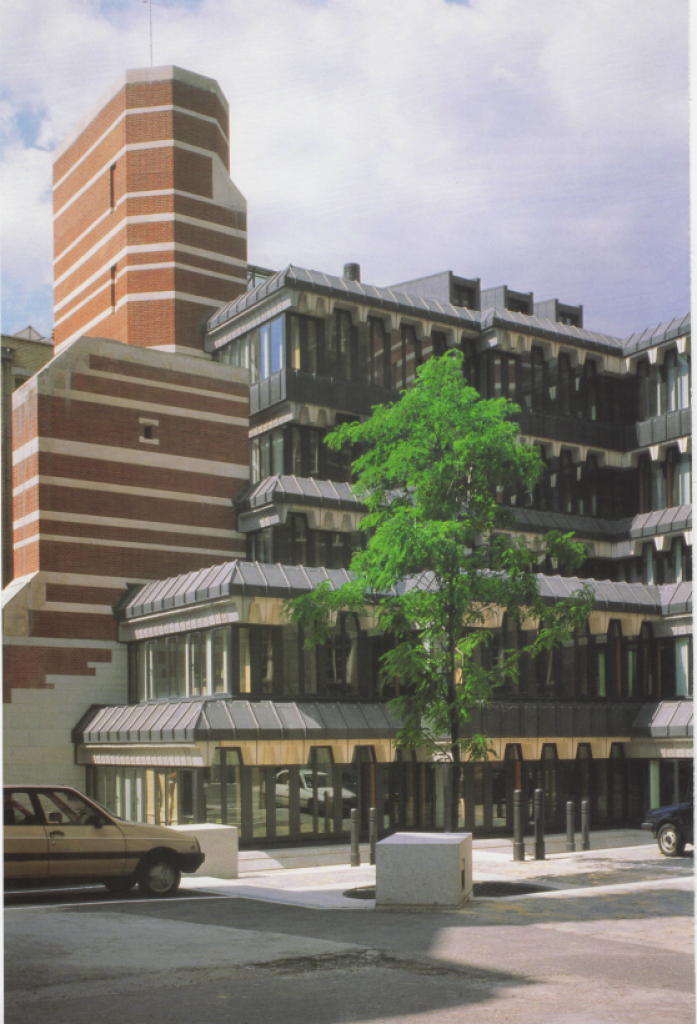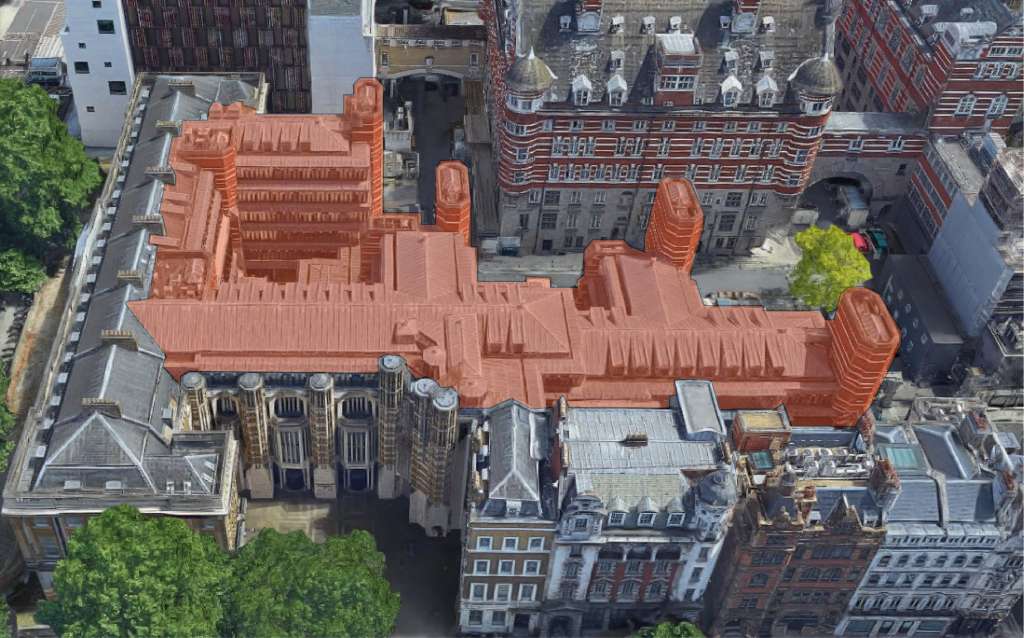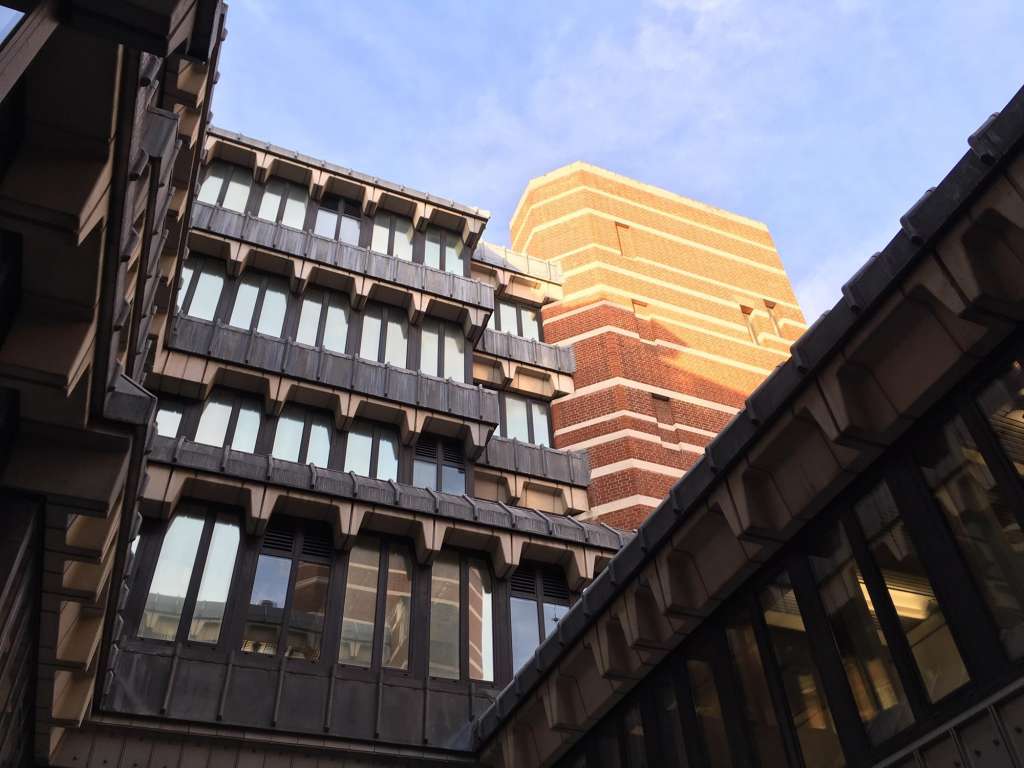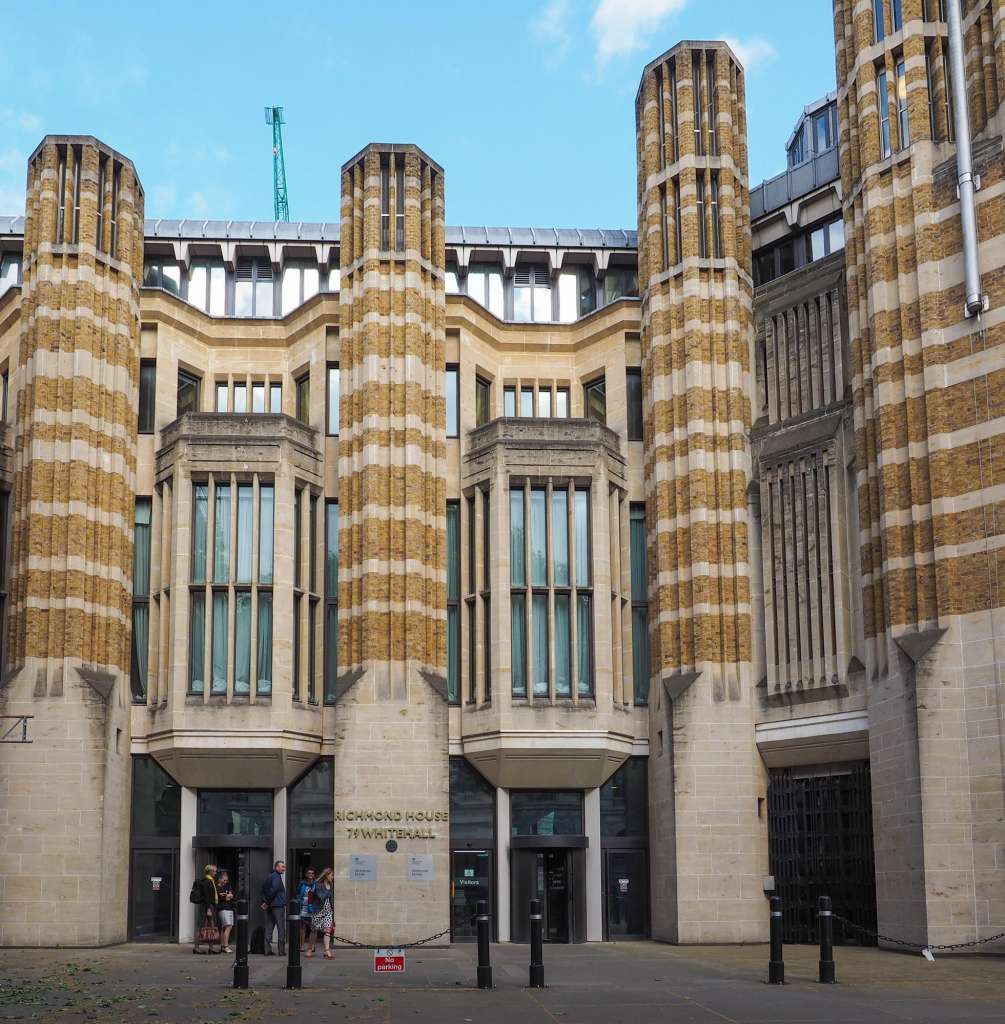PRESS RELEASE: Going green: refurb Richmond House and slash carbon emissions
11th May 2020
A new academic study published today sets out massive energy reduction benefits of retaining and re-using award winning offices in the heart of Whitehall.
The report commissioned by SAVE Britain’s Heritage shows how a refurbished Richmond House offers huge energy savings versus the current demolition and new-build plans proposed by Parliament. See the full report here.
The study led by Dr Rosa Schiano-Phan at the University of Westminster, in collaboration with Mark Hines architects, states that by reducing the operational energy demand in Richmond House and saving the embodied energy costs associated with new a building, carbon emissions can be reduced by over 50 per cent.
Dr Rosa Schiano-Phan, principal lecturer, School of Architecture and Cities, University of Westminster says: “Richmond House is a fine example of climate resilient and sustainable architecture, designed and built to last and provide its occupants with well-crafted, naturally lit and ventilated, pleasant settings. This study confirms that an enhanced natural ventilation strategy can provide comfort conditions in summer avoiding the need for air-conditioning and the associated operational energy demand and carbon emissions. This makes for an uncompromising argument against demolition and the additional embodied carbon emissions inherent with that scenario.”
Mark Hines, director, Mark Hines architects says: “Finding ways of upgrading high quality office buildings like Richmond House is vital if we are to meet the government’s own carbon targets. We are living in an era where the wasteful demolition of incredibly well constructed buildings simply shouldn’t happen.
Air-conditioned office buildings can use more than twice the amount of energy as naturally ventilated ones. By using natural ventilation, we can save energy, reduce the need for extensive and expensive ceiling services, promote cooling, maximise existing ceiling heights, and ensure a comfortable and healthy working environment and create an exemplar low energy office, fit for the 21st century.”
Henrietta Billings, director of SAVE Britain’s Heritage says: “This report by the University of Westminster is a gift to Parliament. By re-using Richmond House, they make huge energy savings by slashing carbon emissions and will rescue a grade II* listed building, nationally recognized for its exceptional architectural importance for future generations. At this time of unprecedented uncertainty and challenge, there is not a better moment to show enlightened and responsible leadership.”
Marcus Binney, executive director of SAVE Britain’s Heritage says: “Richmond House was built to stand the test of time and is not yet 40 years old. It is indefensible for Parliament to ignore the carbon neutral targets it has set for everyone else.”
Under highly controversial plans currently proposed for the northern parliamentary estate by architects AHMM, grade II* listed Richmond House on Whitehall would be almost entirely demolished and re-built to provide accommodation for MPs while the nearby Palace of Westminster is restored. The plans are estimated to cost the public purse at least £800m, and the chamber would only be used for 7-10 years before MPs moved back.
Report recommendations:
The reduction of energy use in existing office buildings is vital in order to meet the government’s carbon targets by 2050 and the challenges of global warming. The University of Westminster has undertaken a thermal modelling analysis to show how using a natural ventilation solution can minimise overheating, virtually eliminate the need for energy hungry air-conditioning and its associated ductwork, and maximise ceiling heights within the building.
The study sets out a series of step by step, low energy strategies that could be adopted within Richmond House including:
- increasing the number of opening windows to increase ventilation;
- bringing fresh air in from within the existing internal courtyard;
- incorporating opening louvers to the façade to facilitate night-time cooling;
- using the existing exposed concrete and brick finishes to help cool the building; and
- using the existing stair towers to increase air movement to carry warm, stale air out of the building at high level.
The work could be undertaken in a phased (floor by floor) manner during occupation, to minimise disruption, and would also reduce construction costs.
Background
SAVE Britain's Heritage in collaboration with Mark Hines architects has published proposals showing that the temporary House of Commons Chamber can be constructed within the main courtyard of Richmond House, a Grade II* listed building on Parliament's Northern Estate. The plan below by Mark Hines architects shows possible environmental enhancements to Richmond House which would also allow for the temporary MPs chamber to be included into the low energy refurb strategy.
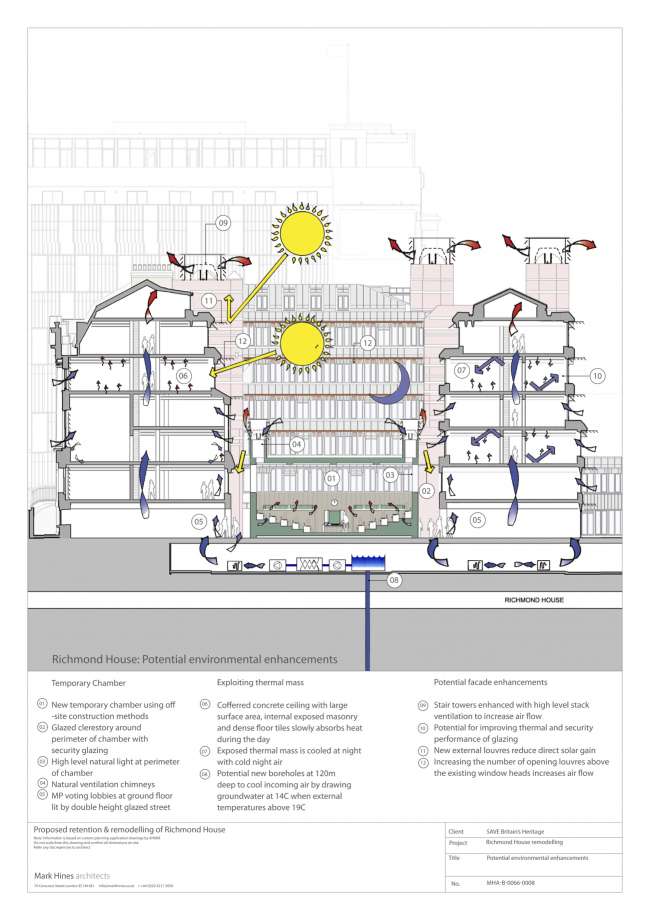
Our campaign to save and re-use Richmond House is supported by 11 Cathedral architects, The Twentieth Century Society, leading architects, architectural historians and journalists. See more background details here.
Parliament’s demolition and rebuild proposals have been submitted to Westminster City Council for planning permission, with a decision expected in the summer. SAVE Britain’s Heritage along with the Twentieth Century Society and many others are urging the Secretary of State Robert Jenrick to call the plans in for a public inquiry.
ENDS.
Notes to editors:
1. For further information contact Henrietta Billings, Director of SAVE Britain's Heritage at office@savebritainsheritage.org or on 07388 181 181.
2. See the full Richmond House report here.
3. Over 1,200 people are currently working in Richmond House in pleasant surroundings with good natural light and natural ventilation. The quality of construction and finish is high, and the ceiling heights of 2.45 metres rising to 2.9 metres meet current British Council of Office standards (the industry standard) and are similar to other Government offices of the 1980s (such as the large complex in Marsham Street).
4. The UK government has set a zero-carbon target for the United Kingdom by 2050. The built environment currently contributes some 39% of UK emissions of which 11% are described as embodied emissions relating to the sourcing of materials, construction, repair, replacement and eventual demolition and disposal of buildings.
5. According to carbon emissions expert Simon Sturgis: “Richmond House is only some 30 years old and represents a significant carbon investment of 16,500 tonnes of CO2, to which would be added the carbon emissions impact of demolition and disposal. To this would also have to be added the embodied carbon emissions cost of any new replacement building.” For more information see our previous press release here.
6. Richmond House was built to the designs of Sir William Whitfield in 1988 and was listed at grade II * by Historic England, the government's advisors on historic buildings. It was awarded a Royal Institute of British Architecture award in 1989, a Europa Nostra Heritage award and Civic Trust award.

